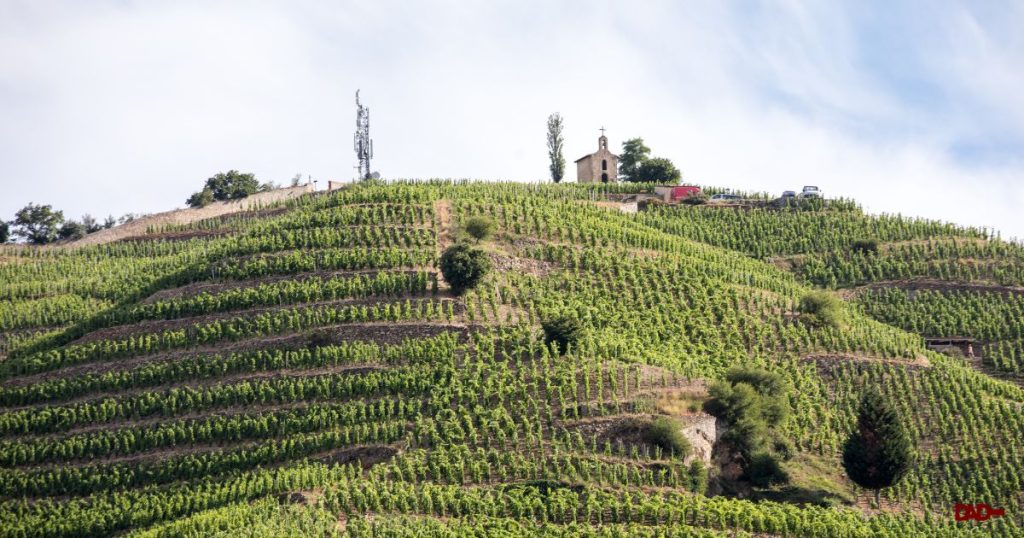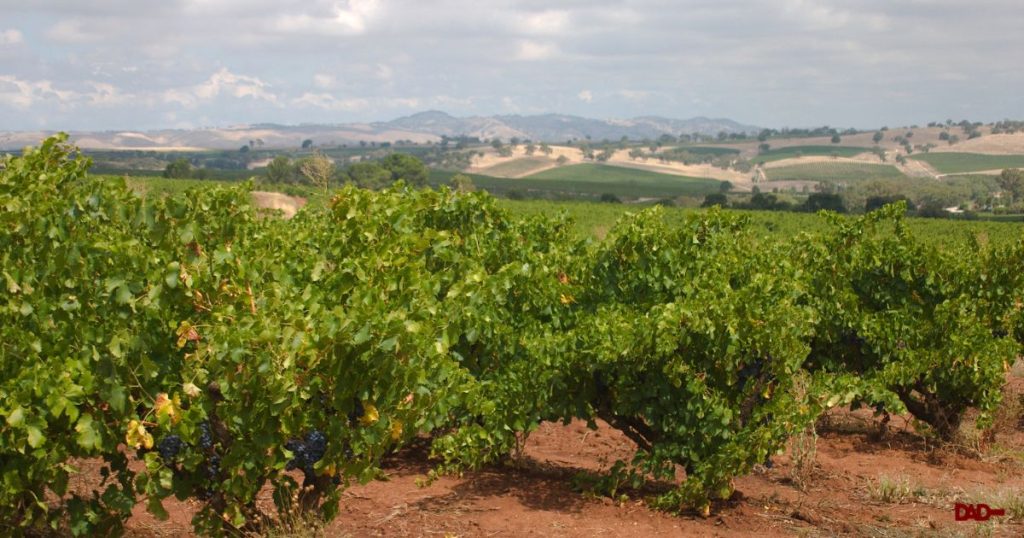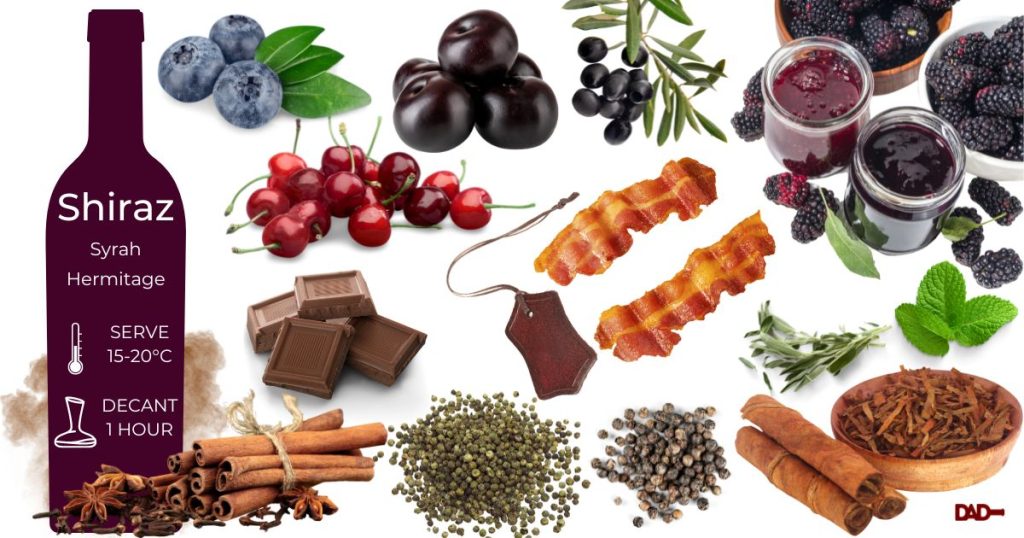If you would steal a few sips of red wine from the glasses of unaware victims, the chances are pretty good that you have had a taste of Shiraz. It’s Australia’s most planted cultivar and most popular wine grape variety, producing a range of styles from medium-, to mostly rich and full-bodied wines.
But what makes this grape so special and versatile? How did it become Australia’s signature red wine? In this blog post, we will explore the origins, characteristics and expressions of Shiraz, and give you some tips on how to enjoy this classic Australian red wine.
Origins of Shiraz

Shiraz is believed to have originated in France’s northern Rhône Valley, where it is known as Syrah. The name, however, has nothing to do with the historic Persian city of Shiraz, which produced famous dry and sweet white wines named for their place of origin1.
Shiraz came to Australia with the James Busby collection in 1832. Busby was a Scottish viticulturist who studied viticulture in France and collected a variety of vines to plant and clone in Australia2. Shiraz was one of the varieties he brought back, along with other French classics like Chardonnay, Cabernet Sauvignon and Semillon.
The feisty varietal thrived in Australia’s warm and dry climate, especially in regions like the Barossa Valley, where some of the oldest vines in the world still produce grapes today. Some of these vines date back to 1843 (Langmeil), 1847 (Turkey Flat) and 1860 (Tahbilk)2. Today, these ungrafted, pre-phylloxera vines produce small crops of grapes with intensely concentrated flavours.

Characteristics of Shiraz
Shiraz is a dark-skinned grape variety that creates medium to full-bodied wines with varying flavour profiles and structure depending on region, climate and winemaking techniques. Shiraz wines typically have aromas and flavours of black fruits, such as blackberries, plums and cherries, as well as spices, such as black pepper, cloves and liquorice. Some Shiraz wines also show notes of chocolate, coffee, leather, smoke or meat.

Shiraz wines have moderate to high acidity and tannins, which give them structure and ageing potential. They also have high alcohol levels, usually between 13.5% and 15%. Ageing in oak barrels can give the wine more complexity, and secondary notes of vanilla, toast or even coconut flavours.
Shiraz Taste Profile
Expressions of Shiraz
Shiraz is grown in virtually every wine region in Australia, from cool to warm climates. Each region produces its own distinctive style, reflecting the terroir and winemaking traditions.
Some of the major regional expressions are:
- Barossa Valley: The most famous region for Shiraz in Australia, producing powerful, rich and full-bodied wines with ripe black fruit, chocolate, spice and oak flavours. These wines can age for decades and are highly sought after by collectors.
- Clare Valley: A cooler region compared to the Barossa that produces elegant, medium to full-bodied wines with bright red fruit, floral, mint and eucalyptus flavours. These wines have crisp acidity and firm tannins.
- Eden Valley: A high-altitude region that produces refined, medium-bodied wines with fresh red fruit, pepper and mineral flavours. These wines have lively acidity and fine tannins.
- Heathcote: A temperate region that produces intense, full-bodied wines with dark fruit, chocolate, coffee and earthy flavours. These wines have smooth tannins and long finishes.
- Hunter Valley: A Mediterranean-style climate that produces medium-bodied wines with savoury red fruit, leather, smoke and meat flavours. These wines have soft acidity and tannins.
- McLaren Vale: A warm Mediterranean climate that produces generous, full-bodied wines with juicy black fruit, liquorice, spice and oak flavours. These wines have balanced acidity and tannins.
Pairing With Food
Shiraz is a versatile wine that can be enjoyed on its own or with food. It pairs well with red meats, such as beef, lamb or venison; grilled or roasted dishes; spicy or smoky dishes; hard cheeses; or chocolate desserts.
Depending on the style and region of the wine, here are some general tips and examples:
- Shiraz pairs best with grilled or roasted meaty dishes, such as hamburgers, roast beef, steak, lamb, venison or wild boar. The fruity and spicy flavours of Shiraz complement and contrast the flavours of the meat, while the tannins and acidity balance the fat and richness3.
- It also pairs well with barbecue, especially for younger and less expensive Shiraz and sparkling Shiraz. Ribs, spicy sausages and smoked brisket are some of the dishes that match the smoky and jammy flavours of Shiraz4.
- Shiraz pairs well with spicy or smoky dishes, such as curry, chilli, jerk chicken or Moroccan tagine. The sweetness and fruitiness of Shiraz can cool down the heat and enhance the aromas of the spices5.
- It can also pair well with some hard cheeses, such as cheddar or gouda, or some mellow blue cheeses, such as gorgonzola or stilton. The cheese can soften the tannins and bring out the fruitiness of Shiraz4.
- Shiraz can also pair well with chocolate desserts, such as brownies, cake or mousse. The chocolate can match the richness and sweetness of Shiraz, while the wine can add some complexity and spice5.
Serve it slightly chilled (around 16°C) to bring out its freshness and fruitiness. It can also benefit from decanting or aerating before serving to soften its tannins and release its aromas.
Hey!
Do you need a cool wine decanter to impress your friends?
Then look no further.

Shiraz can be drunk young or aged for several years or even decades. Most quality new-world wines tend to age well for 10 -12 years. The younger wines are inclined to be more fruity, peppery, and vibrant. A well-structured Shiraz will give you more complexity with age. After a couple of years, you’ll start to find tertiary notes of spice, leather and chocolate.
Shiraz is a grape variety that has found its home in Australia, producing some of the most distinctive and diverse wines in the world. Its versatility alone makes it a highly popular wine. Now, go out and explore the different expressions of this beautiful, sometimes robust varietal and discover your favourite. And, please, do share your findings in the comments section below, or find me on the socials!
1: What is Shiraz? – Wine Selectors
2: Shiraz – The classic Australian red wine | Wine Australia
3: Shiraz Pairings – drinkandpair.com


